Thomas Pasquier
Kairos: Practical Intrusion Detection and Investigation using Whole-system Provenance
Aug 13, 2023

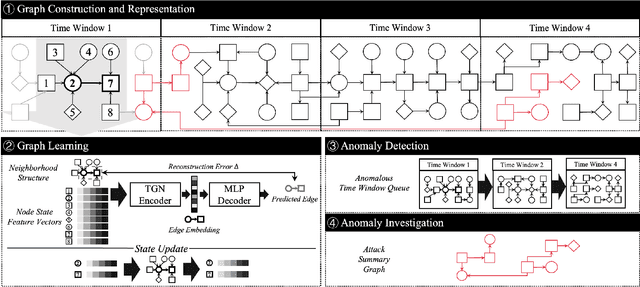
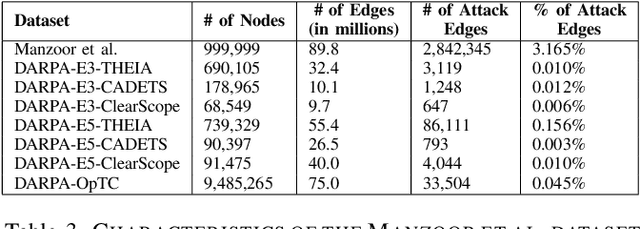
Abstract:Provenance graphs are structured audit logs that describe the history of a system's execution. Recent studies have explored a variety of techniques to analyze provenance graphs for automated host intrusion detection, focusing particularly on advanced persistent threats. Sifting through their design documents, we identify four common dimensions that drive the development of provenance-based intrusion detection systems (PIDSes): scope (can PIDSes detect modern attacks that infiltrate across application boundaries?), attack agnosticity (can PIDSes detect novel attacks without a priori knowledge of attack characteristics?), timeliness (can PIDSes efficiently monitor host systems as they run?), and attack reconstruction (can PIDSes distill attack activity from large provenance graphs so that sysadmins can easily understand and quickly respond to system intrusion?). We present KAIROS, the first PIDS that simultaneously satisfies the desiderata in all four dimensions, whereas existing approaches sacrifice at least one and struggle to achieve comparable detection performance. Kairos leverages a novel graph neural network-based encoder-decoder architecture that learns the temporal evolution of a provenance graph's structural changes to quantify the degree of anomalousness for each system event. Then, based on this fine-grained information, Kairos reconstructs attack footprints, generating compact summary graphs that accurately describe malicious activity over a stream of system audit logs. Using state-of-the-art benchmark datasets, we demonstrate that Kairos outperforms previous approaches.
SIGL: Securing Software Installations Through Deep Graph Learning
Aug 26, 2020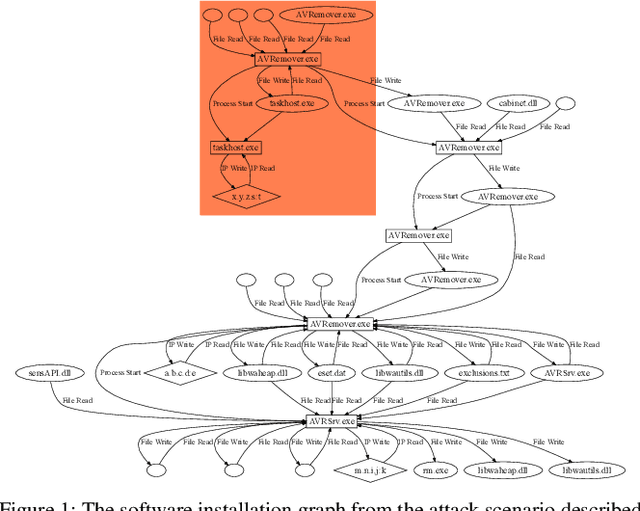

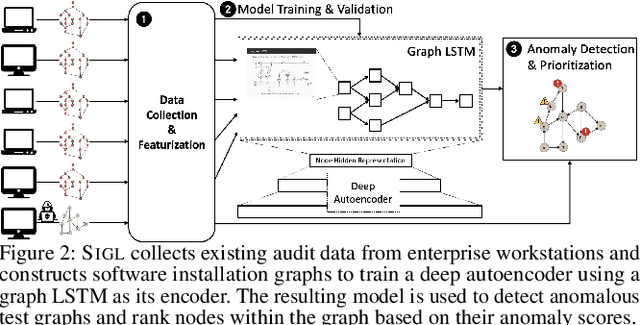
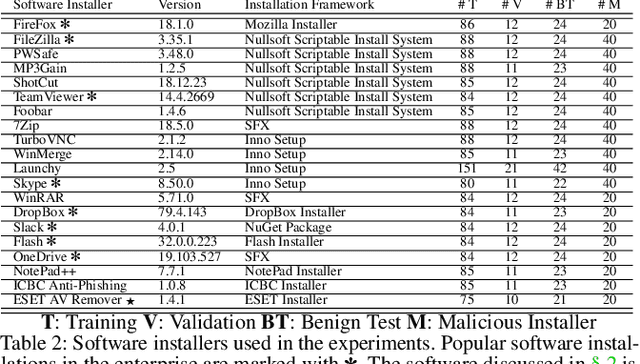
Abstract:Many users implicitly assume that software can only be exploited after it is installed. However, recent supply-chain attacks demonstrate that application integrity must be ensured during installation itself. We introduce SIGL, a new tool for detecting malicious behavior during software installation. SIGL collects traces of system call activity, building a data provenance graph that it analyzes using a novel autoencoder architecture with a graph long short-term memory network (graph LSTM) for the encoder and a standard multilayer perceptron for the decoder. SIGL flags suspicious installations as well as the specific installation-time processes that are likely to be malicious. Using a test corpus of 625 malicious installers containing real-world malware, we demonstrate that SIGL has a detection accuracy of 96%, outperforming similar systems from industry and academia by up to 87% in precision and recall and 45% in accuracy. We also demonstrate that SIGL can pinpoint the processes most likely to have triggered malicious behavior, works on different audit platforms and operating systems, and is robust to training data contamination and adversarial attack. It can be used with application-specific models, even in the presence of new software versions, as well as application-agnostic meta-models that encompass a wide range of applications and installers.
 Add to Chrome
Add to Chrome Add to Firefox
Add to Firefox Add to Edge
Add to Edge